
What’s the empty coast? Where Highway 1 clings to the cliff faces south of Carmel, with basically no left turns and few habitations until it regains civilization and a few crossroads south of San Simeon.
We needed a fall getaway, so D and I headed lickety-split down US-101, aiming for a calm coastal stay in Cambria, followed by a visit to Hearst San Simeon National Monument, and a scenic trip back up through Big Sur and the stretch of California Highway 1 that had been cut off by landslides and fires for several of the past years.
We stopped for lunch in Paso Robles, one of my favorite pauses for trips south and north on Historic El Camino Real. There are several good restaurants in Paso. This time we stopped at the Berry Hill Bistro, where the paninis are huge, the salads ample, and the servers slim and smiling. (I always think it’s a good sign if a restaurant’s waitresses are thin. It means they are running off the calories serving customers as fast as they can, rather than sitting around eating the leftovers.)
Just past Paso we found our exit on CA Highway 46, and sailed along a well maintained road through San Luis Obispo wine country. Acres of grapevines in fall colors cloaked the dry hills, and each winery seemed to be vying with the next to have the most oddly memorable name (my favorite: Tooth and Nail Winery.)
Only a half hour later we were cruising along Cambria’s Main Street. To our delight, we discovered that the entire month of October in Cambria is devoted to a Scarecrow Festival, and each retail, educational, and many private establishments compete for the notice of passers-by. There were Mexican-themed flamenco scarecrows for the Mexican restaurants, a Victorian lady in blue and white next to the blue and white Chase bank logo, and my favorite Raggedy Ann and Andy from my childhood next to a toy and gift store.
After checking into our beachfront motel, the Little Sur Inn, we walked along the boardwalk bordering Moonstone Beach to check out the Moonstone Beach Bar and Grill as a dinner prospect, but although it has a lovely front veranda with a stunning sunset view, and seemed to have a lively patronage, we would have been walking back in the dark, and it seemed a bit far.
We has our traditional champagne on the balcony of our room, looking out over Moonstone Beach. The sunset looked like a banana skin shading around the curve from pale yellow to golden brown. We lingered until we both thought we saw the green flash accompanying the last rays of the sun. Lovely.
As long as we would be getting in the car anyway, we decided to try Robin’s Restaurant in Cambria’s east village, a recommendation from a friend. It is a beautiful adapted home just a block from the Main Street, with a quiet ambiance, excellent service and good food (roasted Brussels sprouts with pine nuts and blue cheese, miso sea bass, firecracker shrimp).
One caveat: As we watched, there were maybe three younger couples coming in or leaving during the evening, but this is definitely a quiet restaurant for an older crowd. D and I are used to upping the average age of the customer base by 10 years when we enter a restaurant. In this case we were right on average. D observed thatRobin’s does not have high chairs or booster seats, but they do seem to have an ample supply of walkers and supplemental oxygen bottles. I guess the younger crowd was still quaffing brewskis on the Moonstone Beach Bar and Grill veranda.
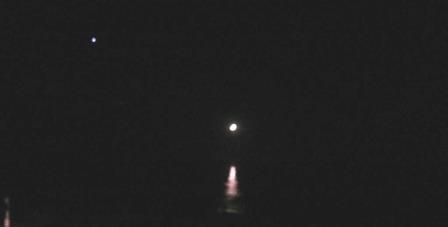 We took the remains of a bottle of local Pinot Noir back to our balcony to finish off the evening with the complimentary chocolate chip cookies from our check- in desk. We sat on our balcony again to watch the crescent moon setting near where the sun had set before our dinner. Suddenly stars! The Milky Way! D even saw a shooting star. Only one spotlight shining on the entry sign for our hotel spoiled the dark sky.
We took the remains of a bottle of local Pinot Noir back to our balcony to finish off the evening with the complimentary chocolate chip cookies from our check- in desk. We sat on our balcony again to watch the crescent moon setting near where the sun had set before our dinner. Suddenly stars! The Milky Way! D even saw a shooting star. Only one spotlight shining on the entry sign for our hotel spoiled the dark sky.


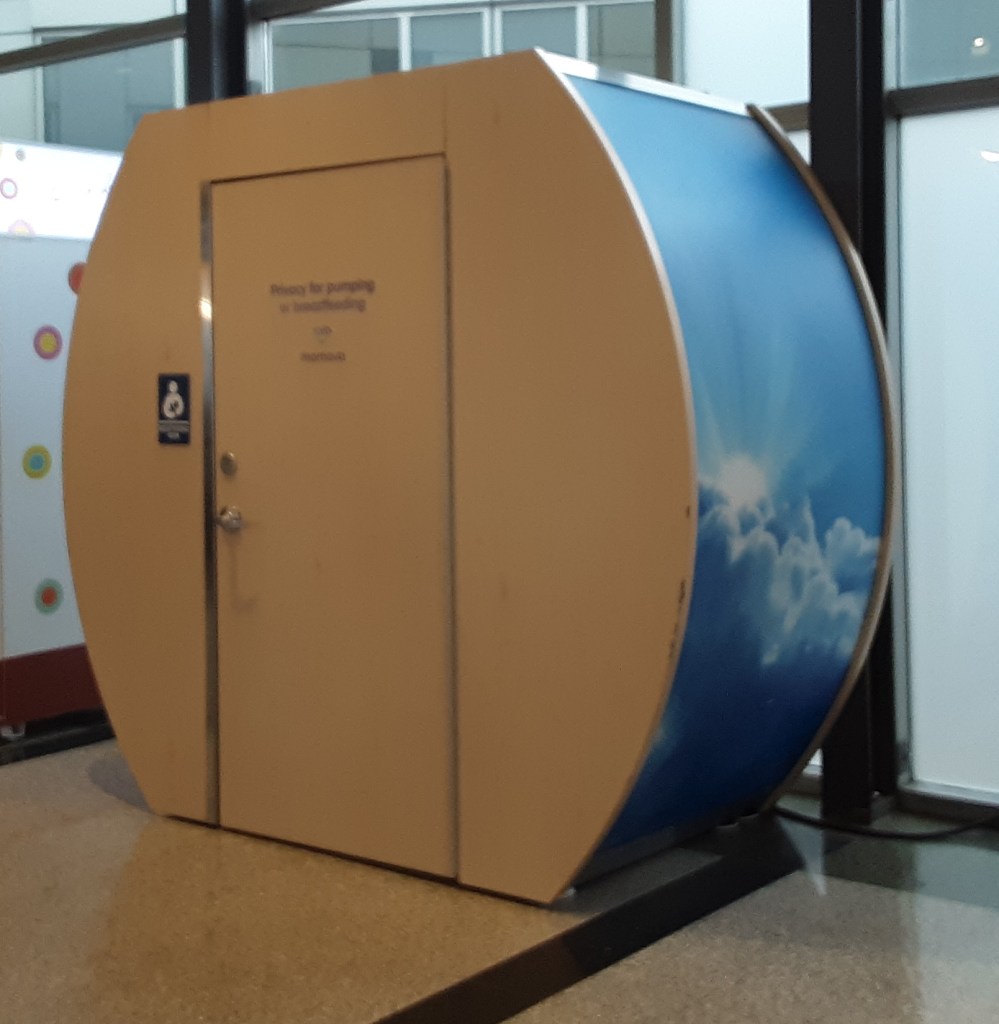








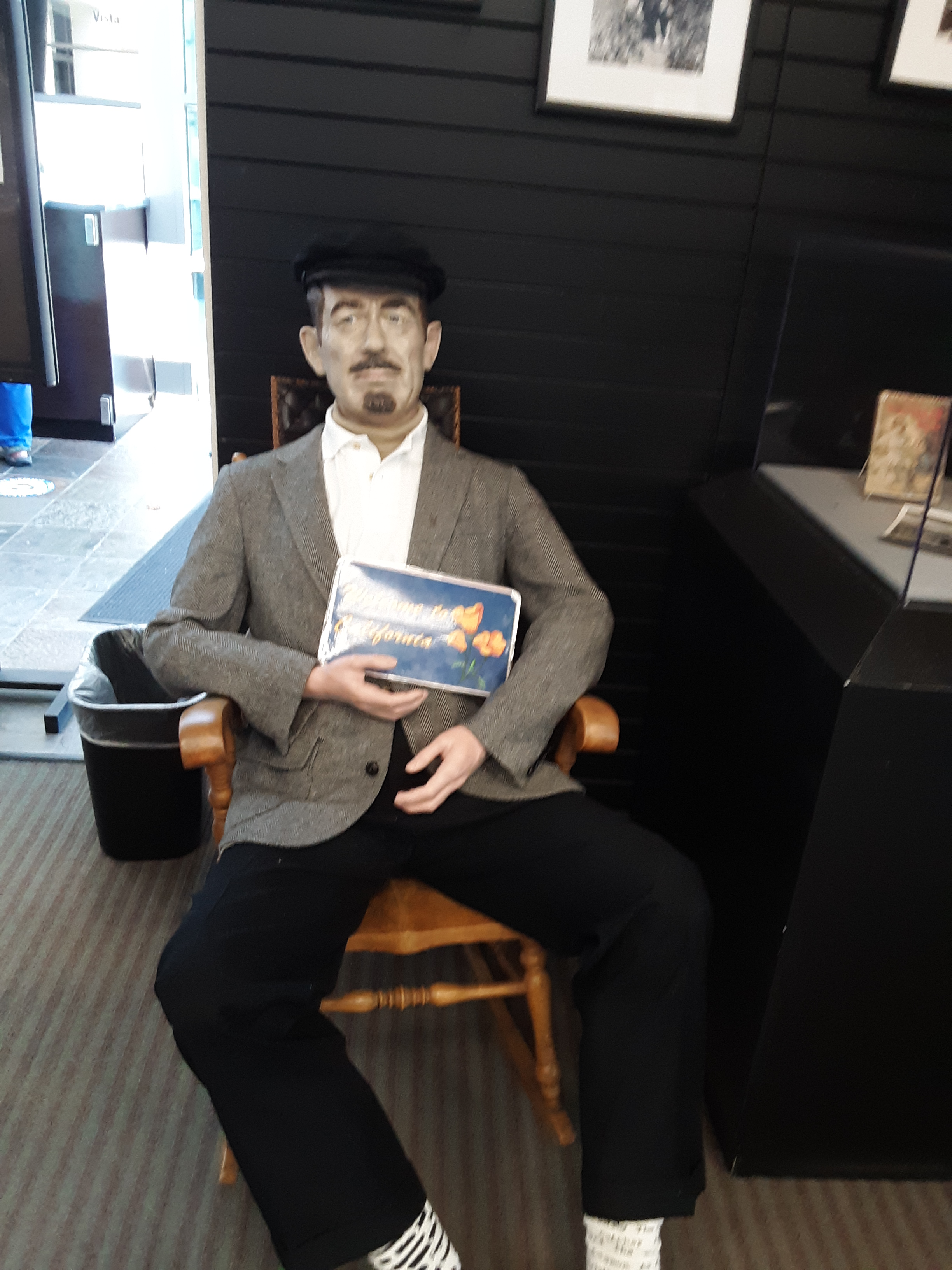





 I live in a COVID-19 hotspot – 43 cases and one death since the beginning of March – and public and private events are being cancelled left and right to prevent transmission. So what is one to do if you are healthy, not in one of the “vulnerable” groups, and needing some relief from the stress of it all? Maybe it’s time to visit a local museum.
I live in a COVID-19 hotspot – 43 cases and one death since the beginning of March – and public and private events are being cancelled left and right to prevent transmission. So what is one to do if you are healthy, not in one of the “vulnerable” groups, and needing some relief from the stress of it all? Maybe it’s time to visit a local museum.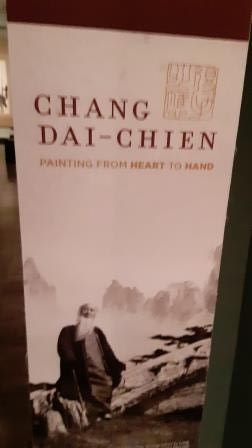 The exhibit that drew me to the museum featured
The exhibit that drew me to the museum featured 

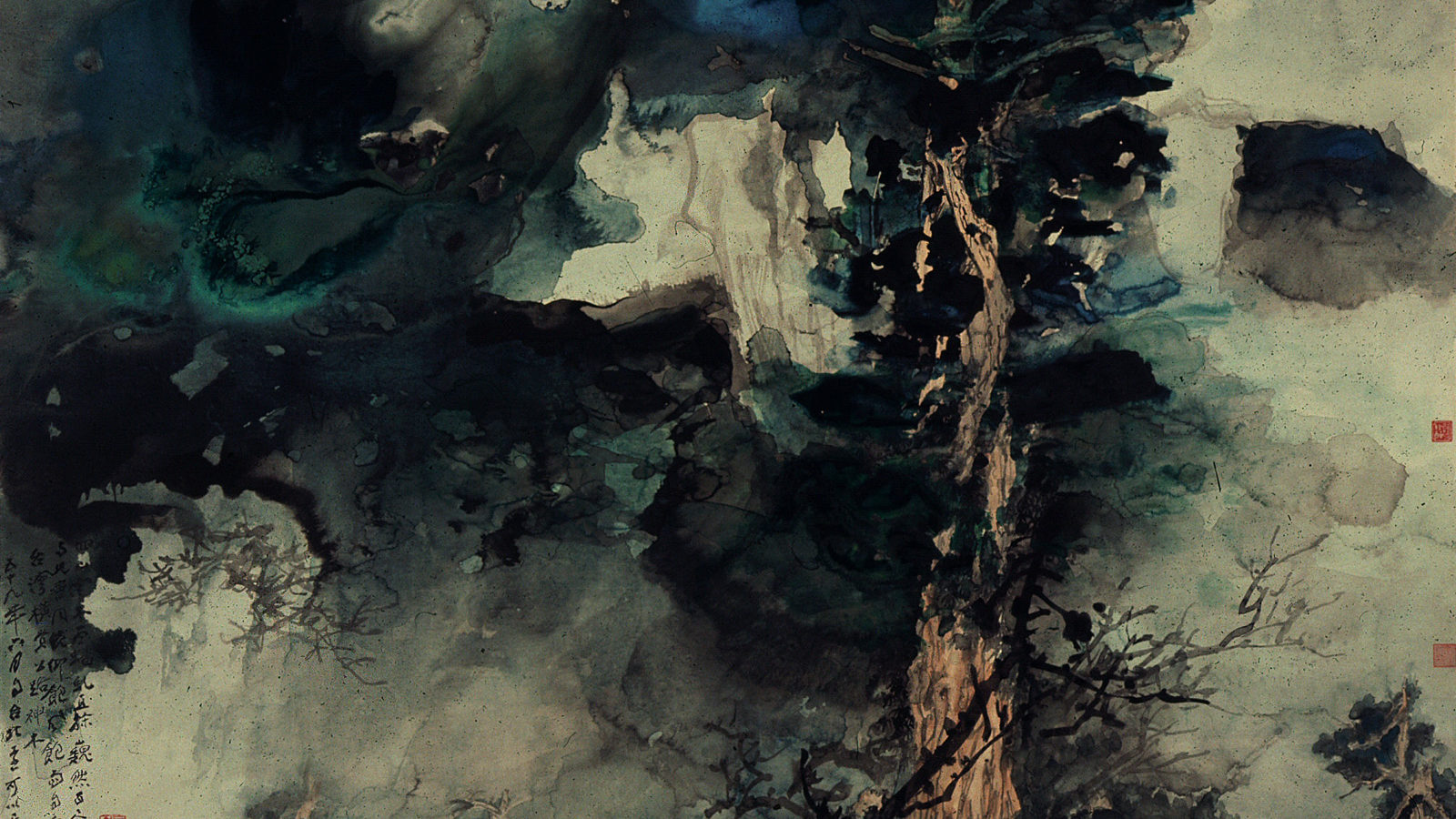






 Astoria is way out on the furthest northwestern tip of Oregon, at the mouth of the Columbia River. It is the oldest city in the state of Oregon, founded in 1811, and named for John Jacob Astor, the New York investor whose American Fur Company founded Fort Astoria at the site. (Yes, the Waldorf-Astoria in New York is also named for him.) In bygone years Astoria was a bustling harbor, with schooner after schooner fighting her way past the dreaded Columbia River bar to pick up timber, fish, and furs, dropping off supplies and merchandise for the well-to-do families of trappers, fishermen, and lumberjacks.
Astoria is way out on the furthest northwestern tip of Oregon, at the mouth of the Columbia River. It is the oldest city in the state of Oregon, founded in 1811, and named for John Jacob Astor, the New York investor whose American Fur Company founded Fort Astoria at the site. (Yes, the Waldorf-Astoria in New York is also named for him.) In bygone years Astoria was a bustling harbor, with schooner after schooner fighting her way past the dreaded Columbia River bar to pick up timber, fish, and furs, dropping off supplies and merchandise for the well-to-do families of trappers, fishermen, and lumberjacks. We stopped for lunch after our museum visit at the Rogue Public House, a brewpub located in a re-purposed fish cannery out on a pier just down from the museum. We enjoyed their boutique beer, plus an excellent pizza and salad. Then we took advantage of a temporary cessation of rainfall to stroll the delightfully un-restored, un-modernized, un-redeveloped downtown.
We stopped for lunch after our museum visit at the Rogue Public House, a brewpub located in a re-purposed fish cannery out on a pier just down from the museum. We enjoyed their boutique beer, plus an excellent pizza and salad. Then we took advantage of a temporary cessation of rainfall to stroll the delightfully un-restored, un-modernized, un-redeveloped downtown. At one end of Commercial Street is the wonderful wedding cake-like Liberty Theatre, located, of course, in the Astor Building. (See photo above.) We were visiting in October, so the Box Office was spectrally staffed.
At one end of Commercial Street is the wonderful wedding cake-like Liberty Theatre, located, of course, in the Astor Building. (See photo above.) We were visiting in October, so the Box Office was spectrally staffed.






 We took the remains of a bottle of local Pinot Noir back to our balcony to finish off the evening with the complimentary chocolate chip cookies from our check- in desk. We sat on our balcony again to watch the crescent moon setting near where the sun had set before our dinner. Suddenly stars! The Milky Way! D even saw a shooting star. Only one spotlight shining on the entry sign for our hotel spoiled the dark sky.
We took the remains of a bottle of local Pinot Noir back to our balcony to finish off the evening with the complimentary chocolate chip cookies from our check- in desk. We sat on our balcony again to watch the crescent moon setting near where the sun had set before our dinner. Suddenly stars! The Milky Way! D even saw a shooting star. Only one spotlight shining on the entry sign for our hotel spoiled the dark sky.














 At the time of my visit, the museum had thrown the traditional chronological arrangement of its art right out the window, and had rearranged its El Greco’s, its Goyas, its Gauguin in alphabetical order by subject. So the Gauguin was exhibited under A for ART, taken out of its frame and put between glass panels so you could see the paint smudges on the edges of the canvas, and some scribbles by the artist on the back of the canvas. In the same room were examples of art by paleolithic artists as well as moderns ones. It made me think about the Gauguan in a completely different way.
At the time of my visit, the museum had thrown the traditional chronological arrangement of its art right out the window, and had rearranged its El Greco’s, its Goyas, its Gauguin in alphabetical order by subject. So the Gauguin was exhibited under A for ART, taken out of its frame and put between glass panels so you could see the paint smudges on the edges of the canvas, and some scribbles by the artist on the back of the canvas. In the same room were examples of art by paleolithic artists as well as moderns ones. It made me think about the Gauguan in a completely different way.







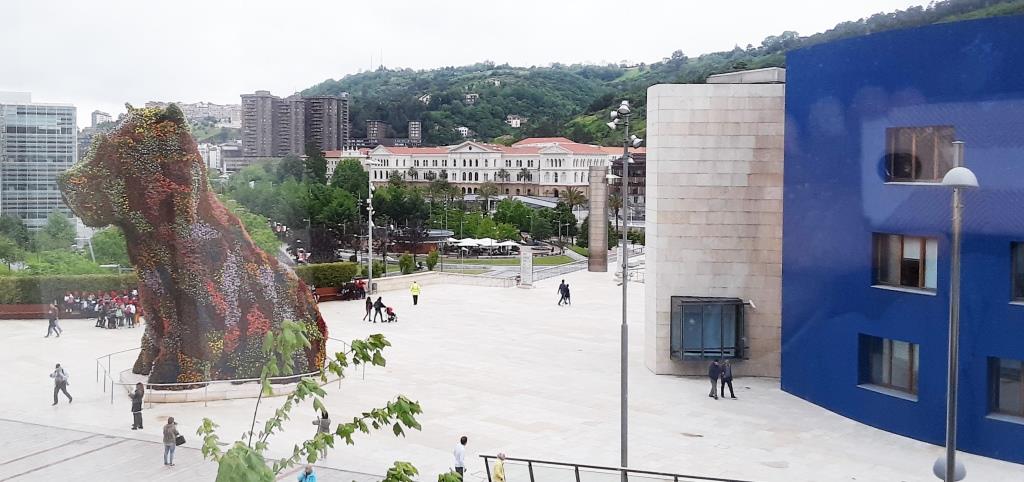








 So – come to Bilbao for the walk, the outdoor art, the architecture, the parks… and that’s only the first day!
So – come to Bilbao for the walk, the outdoor art, the architecture, the parks… and that’s only the first day!